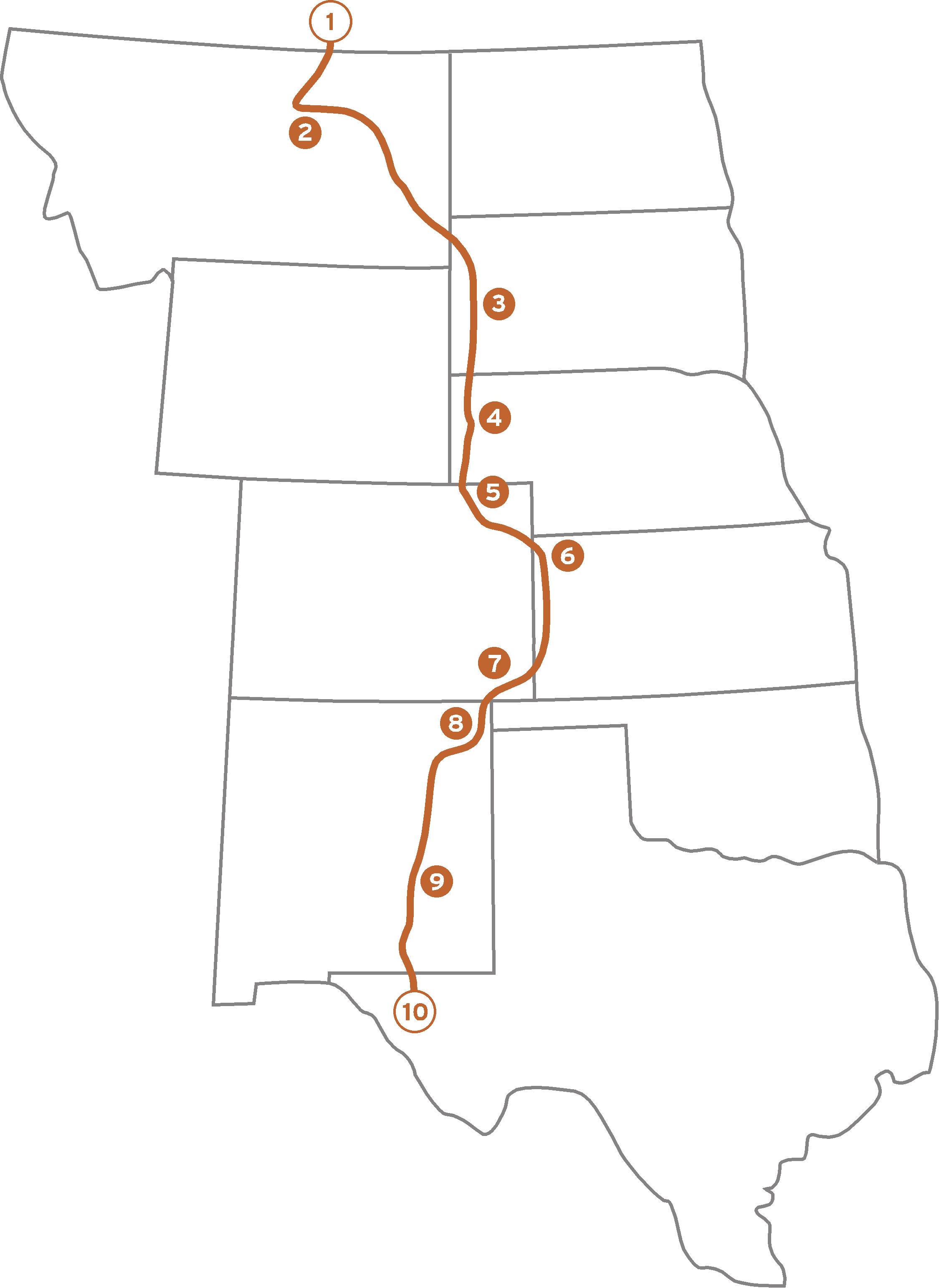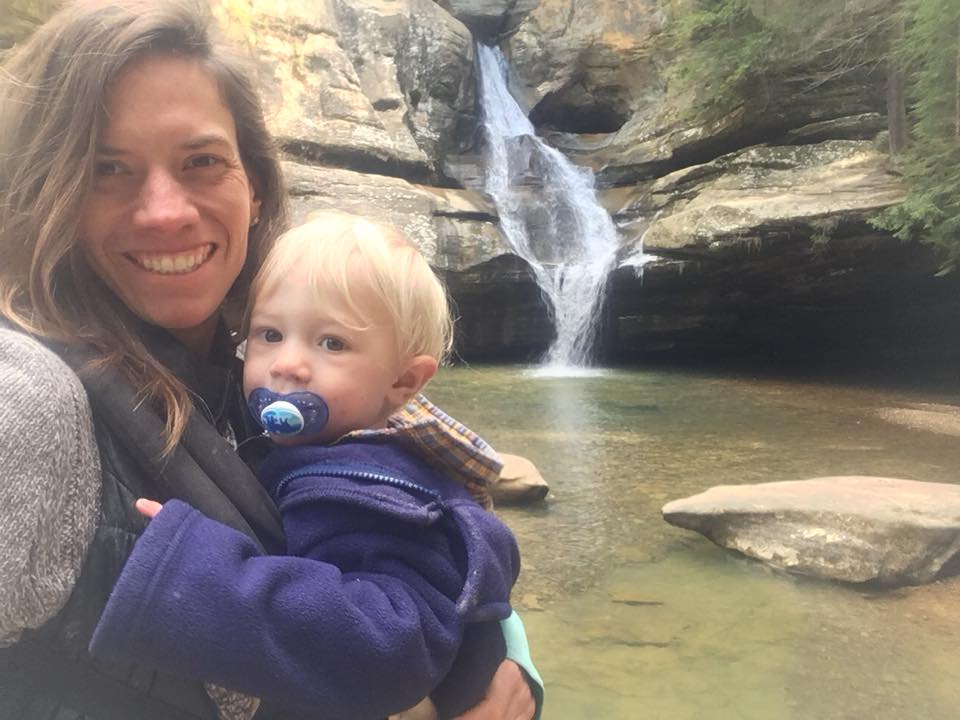Last week I gave a talk at Cuyahoga Valley National Park.
Even on a cold, snowy night those mid-westerners showed up in force. In Ohio the sense of community is evident along with a keen interest in the outdoors and strong support for local events. The Midwest may not be known for its hiking culture, but I’ve witnessed greater interest in outdoor recreation in places like Ohio, Michigan and Iowa than in states such as Colorado and Washington.
After the presentation a young man walked up to me and handed me a book titled, “Thru and Back Again.” It was a gift.

I looked up and reached out my hand to greet the author and thank him. I had heard of Luke “Strider” Jordan and even reviewed his book, but this was our first face-to-face meeting. I agreed months ago to give him a blurb for his adventure memoir because I thought it was both impressive and interesting that he tackled the North Country Trail. Most long distance hikers get their feet wet on the Appalachian Trail or Pacific Crest Trail, Strider decided to begin his thru-hiking career on a trail twice as long, twice as cold, and infinitely more lonely.
I thanked him for the book, which as my hiking friend “Puddin” puts it is a pattern of stories that emphasizes the amount of walking he did and the kindness of people along the way. Then, I asked him what he had been up to since hiking the North Country Trail.
“I recently finished the Great Plains Trail,” he said.
I nodded my head and smiled like I knew what he was talking about.
Hoping he would offer some identifying details, I asked, “Oh yeah, the Great Plains Trail. How far is that again?”

Strider went on to explain that it was a 2,000+ mile path that traveled through the plains east of the Rockies. He started in Texas and hiked up through New Mexico, Colorado, Nebraska, South Dakota and Montana to reach Canada. He didn’t tell me that he was the first and only person to the hike trail, but Google later did.
Recently, I have become fascinated with the lesser traveled long distance trails. Maybe it’s due to my time on the Mountains-to-Sea Trail last fall or my upcoming hike on the Alabama Pinhoti Trail this spring or perhaps it’s because of meeting Strider and learning more about the North Country Trail and Great Plains Trail. But whatever the reason, I am becoming more and more convinced that as the Triple Crown (AT, PCT, and CDT) grows in popularity there is greater adventure and solitude to be found on the newer and often incomplete footpaths.
Don’t get me wrong, I love the AT and the PCT but I’m pretty sure those two trails are willing to share the love. Each year the number of thru-hikers rises on America’s most iconic trails and they are forced to deal with issues of dispersing and limiting the impact of backpackers and day hikers. Making a personal decision to experience other trails helps to support conservation and recreation in different parts of the country and also helps preserve paths such as the Appalachian Trail and Pacific Crest Trail.
At Blue Ridge Hiking Company we love guiding day hikes and backpacking trips on the Appalachian Trail but we also get really excited about showing our clients the beauty of the 30 mile Art Loeb Trail in Shining Rock Wilderness or portions of the Mountains to Sea Trail near Mount Pisgah and Rattlesnake Lodge. As far as our guiding team is concerned, the trails we use are a little like our children: we love them all and it’s hard to pick a favorite. (And, even when you are secretly partial, it can quickly change with one temper tantrum.) Ultimately they all have different personalities and each one offers something unique and worthwhile.

Driving back home from Ohio, my friend and I stopped at Hocking Hills state park and set out for a short jaunt on the 1,400 mile loop known as the Buckeye Trail. The path we walked also coincided with the 6,800 mile coast-to-coast American Discovery Trail. I’m not sure if I’ll ever hike experience either of those adventures in full, but here’s what I’m certain of – especially as I gather my gear and plan my resupply points for the Pinhoti Trail – when two roads diverge in the woods it’s important to consider the road less traveled.









Comments
william
March 29, 2018 - 5:41pm
I think "the road less traveled" is a quote from Thoreau; but I'm not sure. I will buy this North Country trail book. Of all the trail memoirs I have bought the one I didn't trade in to the used book store was "Walking with Spring."
Sandy Ladd-Russell
November 19, 2019 - 12:44pm
Great blog article! My friends and I just returned from hiking Grandma Gatewood's trail in Hocking Hills and loved the beauty there. We are hoping to get in some section hikes on the AT next year. I'm so glad a stumbled onto your blog site. Hopefully, we will see you in North Carolina in 2020. Have a great day. (Your book, Becoming Odyssa is my next scheduled hiking read) Thanks for sharing about your trek.